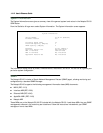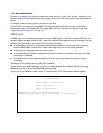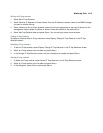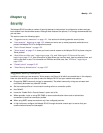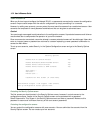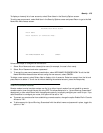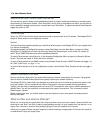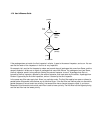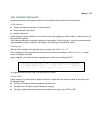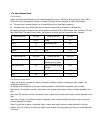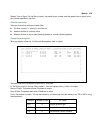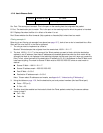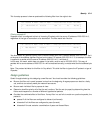
15-4 User’s Reference Guide
Enable SmartStart/SmartView/Web Server
You may wish to restrict access to the web-based screens to prevent inadvertent switching or connecting and
disconnecting of Connection Profiles. Since SmartStart can be used to reconfigure the router, you may wish to
block inadvertent damage resulting from unauthorized use of SmartStart. To prevent access to these features
toggle this option to “No”.
Telnet access
Telnet is a TCP/IP service that allows remote terminals to access hosts on an IP network. The Netopia R3100
supports Telnet access to its configuration screens.
Caution!
You should consider password-protecting or restricting Telnet access to the Netopia R3100 if you suspect there
is a chance of tampering.
To password-protect the configuration screens, select Easy Setup from the Main Menu, and go to the Easy
Setup Security Configuration screen. By entering a Name and Password pair in this screen, all access via
serial, Telnet, SNMP, and web server will be password-protected.
To restrict Telnet access, select Security in the Advanced Configuration Menu and go to the Security Options
screen. There are two levels of Telnet restriction available:
To restrict Telnet access to the SNMP screens, select Enable Telnet Access to SNMP Screens and toggle it to
No. (See “SNMP traps” on page 14-14.)
To restrict Telnet access to all of the configuration screens, select Enable Telnet Console Access and toggle it
to No.
About filters and filter sets
Security should be a high priority for anyone administering a network connected to the Internet. Using packet
filters to control network communications can greatly improve your network’s security.
The Netopia R3100’s packet filters are designed to provide security for the Internet connections made to and
from your network. You can customize the router’s filter sets for a variety of packet filtering applications.
Typically, you use filters to selectively admit or refuse TCP/IP connections from certain remote networks and
specific hosts. You will also use filters to screen particular types of connections. This is commonly called
firewalling your network.
Before creating filter sets, you should read the next few sections to learn more about how these powerful
security tools work.
What’s a filter and what’s a filter set?
A filter is a rule that lets you specify what sort of data can flow in and out of your network. A particular filter can
either be an input filter—one that is used on data (packets) coming in to your network from the Internet—or an
output filter—one that is used on data (packets) going out from your network to the Internet.
A filter set is a group of filters that work together to check incoming or outgoing data. A filter set can consist of
a combination of input and output filters.



